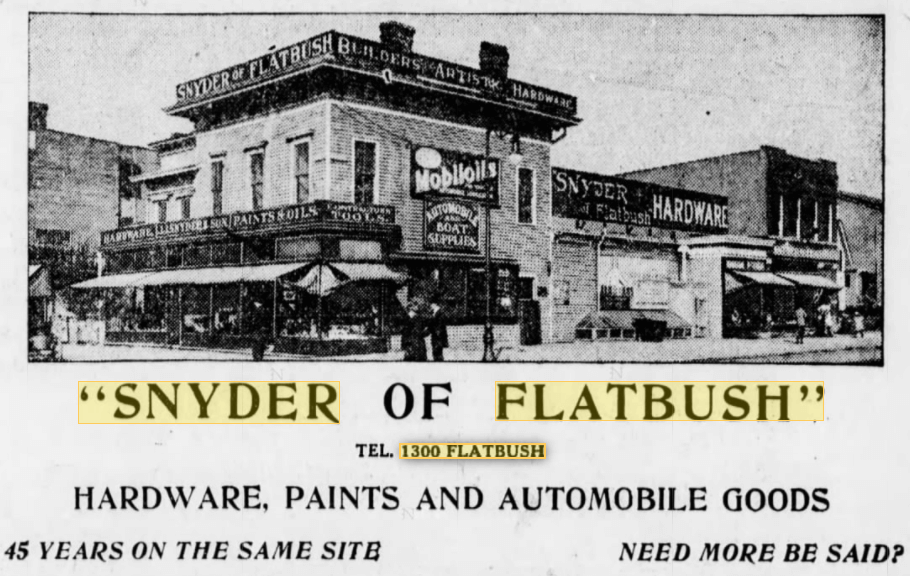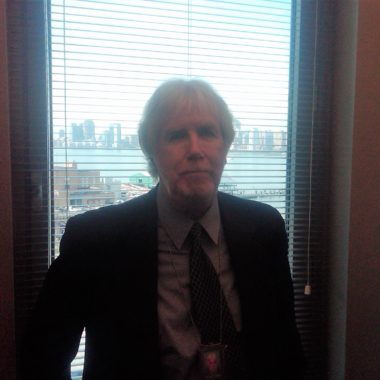George was surfing the Internet again. Uh oh.
“Enright, I’m sick of your memories, I need some Brooklyn history…Wait, here’s something! It says in this 1946 Times obit that John Jacob Snyder was buried in Green-Wood as the ‘Mayor of Flatbush’ but I never heard of him. See what you can dig up!”
“George, if you want some grave-digging, that’ll cost extra.”
“Get out of here and get busy!”
My first stop was Green-Wood. This time the graves were close to Flatbush, just inside the Fort Hamilton Parkway entrance, near Gravesend Avenue…oops…Gravesend was renamed McDonald Avenue in 1933 to honor a 40-year veteran of the Brooklyn Surrogate Court who choked to death on a chicken bone. Residents and businesses from Park Slope to Coney Island were against the change, but back then it was Tammany Rules. By all accounts John McDonald, who lived five blocks east of Gravesend Avenue, was a kind, decent, charitable man. But honoring him wiped out a street name that had stood for 267 years. I mean, Nathan Hale rode down Gravesend! Why not rename East 5th Street instead? Apparently, the clinching argument was that “Gravesend” was “too morbid a name.” Wow.
But here’s an interesting postscript: McDonald had a son named Miles, born 1906, who would become the U.S. Attorney for Eastern District and then in 1945, be elected Brooklyn District Attorney. Clean as a hound’s tooth, he launched an investigation into allegations that NYPD enforcement against gambling was compromised. And he discovered a large gambling ring protected by scores of police at the highest levels of the NYPD and by (GULP!) the Mayor himself! If this were the plot of a sequel to Z, the 1969 Costa Gavras thriller about monstrous political corruption, McDonald would have been assassinated (if you’ve never seen it, put down this foolishness and stream Z immediately – hell, watch it again anyway, no matter how often you’ve seen it).
Commissioner Bill O’Brien and Mayor William O’Dwyer – a former cop, judge, and District Attorney of Brooklyn! – fought back, blasting McDonald and the Grand Jury judge, “Hanging Sam Liebowitz,” the only non-Irishman in this saga. But after hearing wiretaps detailing his graft payoffs, the Commissioner resigned and Mayor O’Dwyer quickly secured an appointment as Ambassador to Mexico, remaining there for several years, safe from New York prosecutors. As a result, 22 policemen were convicted, and 240 others were dismissed or resigned. And the next DA, Commissioner, and Mayor did not have McDonald assassinated because 1) this is America, God damn it; or 2) maybe they didn’t have a good address for him.
O’Dwyer’s blithe exit reminds me of another corrupt NYC Irish mayor, Jimmy Walker. As he took the stand during a corruption trial in the Roaring Twenties, he elicited chuckles from the packed courtroom when he announced: “There are three things a man must do alone: be born, die and testify.”
So where was I? Oh yeah. The Snyder Family plot in Green-Wood is extensive. I jotted down the names and did some research to track down any descendants who might give me some juicy quotes. Alas, I found the last direct descendant of “the Mayor of Flatbush” passed away in 2013. There was only one thing left to do. Make up some descendants and quotes. Just kidding, George, LOL.
Here now the facts: John Jacob Snyder, the father of the “Mayor of the Flatbush,” was born in Germany in 1830, boarded a steamer in Rotterdam in 1850 bound for Manhattan Island and ten years later set up shop in the Dutch Town of Flatbush as a carpenter. He would remain the only German there for the next 30 years. From his marriage to a Scottish immigrant from Glasgow, there sprang three brothers and a sister who will become the stars of this series. First some scene setting.
Back in 1860 Flatbush was centered around the Dutch Reform Church, its third iteration built in 1793, which still stands at the southwest corner of Flatbush & Church Avenues. Before a steam railroad arrived in 1870 (now the Brighton line), only a horse-drawn trolley connected the village to the up-slope metropolis of Brooklyn, sitting atop the terminal moraine which separated the City from its hayseed southern neighbors. Most of Flatbush consisted of farms, whose mercantile needs were serviced by shops straddling for a block or two in either direction the old BIPOC road, Flatbush Avenue.
In 1871 John Jacob Snyder created a small carpentry/hardware shop a block south and a block east of the old Dutch church, at the corner of Locust Street & Union Place. Four years later Union Place was renamed Grant Street to honor the sitting President, General Ulysses S. Grant. As the years passed and the population of Flatbush grew, John J. Snyder successfully pushed for the southward extension of Bedford Avenue down from Crown Heights to obliterate the miniscule Locust Street. And then in 1904, as Snyder grew long in the tooth, and as his hardware store prospered, the commercial powers that be decided that Grant, dead now for almost 20 years, should bow to progress and Grant Street was renamed Snyder Avenue.
COMING IN PART TWO: Snyder’s youngest son arrested for jilting a working girl! Snyder’s oldest son corners the lumber market in Gowanus! Snyder’s middle son is dubbed “Mayor of Flatbush.” Who are these people?










